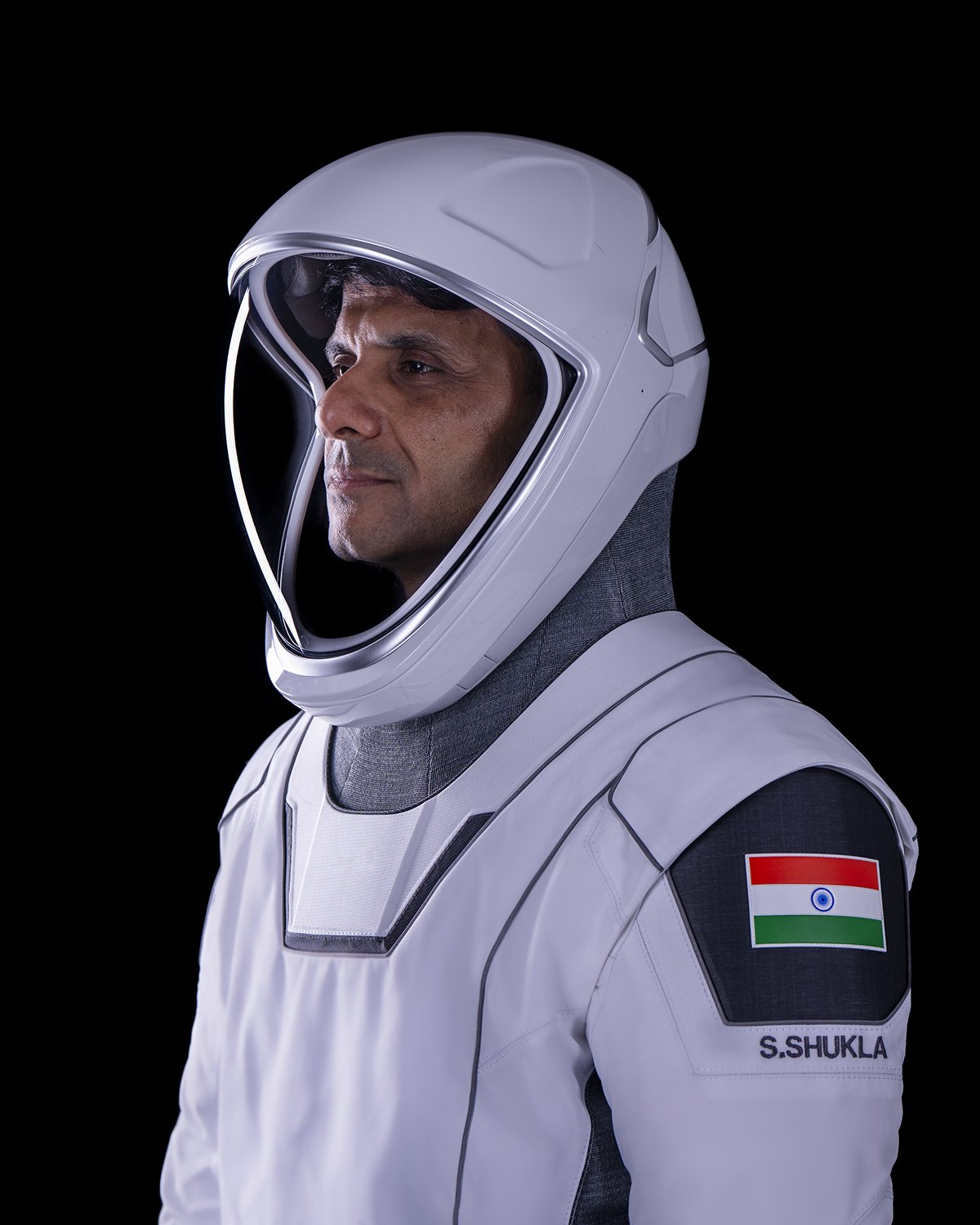By The Sampadak Express
India’s human spaceflight ambitions receive a major boost as IAF Group Captain Shubhanshu Shukla blasts off to the ISS aboard the Axiom-4 mission.
Marking India’s first human space mission in four decades, Indian Air Force Group Captain Shubhanshu Shukla embarked on a historic journey to the International Space Station (ISS) as part of the Axiom-4 (Ax-4) mission. The liftoff took place from NASA’s iconic Launch Complex 39A, the very same pad used by Neil Armstrong on the Apollo 11 mission.
Moments after launch, Shukla’s first words were: “Namaskar mere deshwasiyon! Jai Hind, Jai Bharat.”
Despite earlier delays due to weather, a rocket leak, and an issue with a Russian ISS module, the mission finally lifted off at 12:01 PM IST. The successful launch was carried out aboard a reused Falcon 9 rocket by SpaceX, with a brand-new Dragon spacecraft carrying the four-member international crew, including astronauts from the US, Poland, and Hungary.
Mission at a Glance: How Axiom-4 Reaches the ISSF
ueling & Liftoff: Begins 35 minutes before launch with supercooled liquid oxygen and RP-1. Dragon switches to internal power at T-5 minutes.
Stage Separation: At ~2.5 minutes, Falcon 9’s first stage detaches and lands on a drone ship; the second stage takes Dragon into orbit.
Orbital Chase: Over the next 20–24 hours, Dragon performs engine burns to align with the ISS at 27,000 km/h.
Docking: Final approach to the ISS Harmony module involves magnetic soft capture followed by mechanical hard capture.
ISS Entry: After safety checks, hatches open, and astronauts begin their two-week science mission.
What Will the Crew Do?
The Ax-4 mission is Axiom Space’s most research-heavy mission to date, with over 60 experiments representing 31 nations.
Key research includes:
1. Cancer behavior in microgravity
2. Wireless sound transmission in space
3. DNA repair mechanisms
4. 3D-printed polymers
5. Microalgae and microbial life support systems
6. India’s Space Research on the Mission
ISRO, along with Indian universities, is focusing on space agriculture and life-supporting microbes. Experiments include:
Genetically resilient crops for future Mars and Moon bases
Salad seed germination in zero gravity
Cyanobacteria studies to explore oxygen generation and waste recycling in space
These studies are in partnership with IIT Dharwad, Kerala Agricultural University, ICGEB, and ESA.
What This Means for India
Shukla’s presence aboard Ax-4 signals India’s serious push toward independent human spaceflight. It directly supports:
The upcoming Gaganyaan mission (crew launch expected by 2027)
Plans for the Bharatiya Antariksh Station (BAS) by 2035
India aims to become the fourth nation to launch humans into space independently after Russia, the US, and China.
Though Gaganyaan has seen delays, ISRO is set to launch its first uncrewed test mission later this year, with four astronauts already undergoing intensive training.
A Global Collaboration
In a statement, the Department of Space highlighted the importance of Shukla’s role:
“Shukla's mission underscores India’s growing engagement with international public-private partnerships and its resolve to become a leading force in human space exploration.”
With this mission, India has not only re-entered human spaceflight but also strengthened its position as a credible, collaborative player in the global space community.



leave a reply